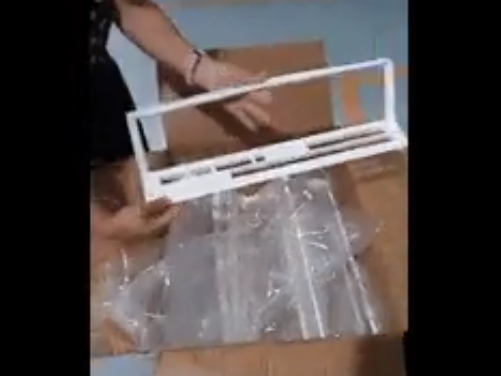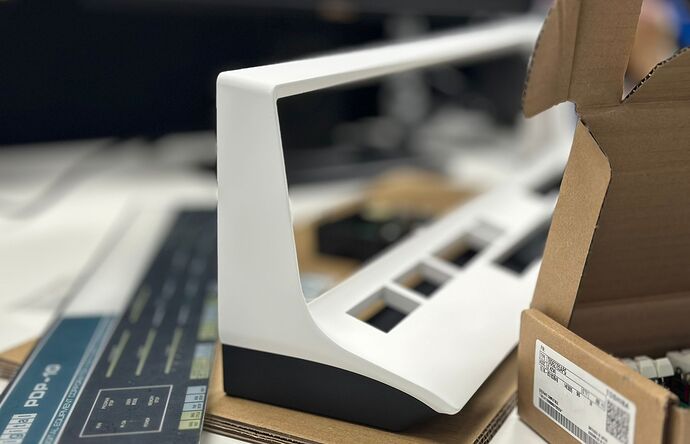Last week I helped Oscar Vermeulen interfacing Cornwell’s KA10 emulator to the PiDP-10 prototype. We believe most lights and switches work roughly right. Here’s a short clip playing with some of the lights.
New Update from Oscar Vermeulen. “Apparently, we are still on schedule for a July delivery of the production parts.”
Oscar wrote: “Today was the day! We have replica PDP-10 cases! Loads of them. It took us 7 years, but we can finally start making the PiDP-10.”

https://twitter.com/Oscar_CEDS/status/1755334778126041112
Great news! The story-so-far is rather interesting - having shipped some 12000 kits over the kitchen table, there’s now a team and a factory.
That is some demand.
Could the PDP-10 have replaced the VAX?
It was actually the other way round: the VAX (originally PDP-VAX 11/780) extended and succeeded the PDP-11, and replaced the PDP-10.
The VAX was an early 32-bit mini, but I think it was fairly feeble compared to, say, the Norsk Data 500 series.
I know the VAX replaced the the PDP 10, but the question was, Could a Mini PDP 10
be sold. More small company rather than a large time sharing system would be that
market place.
As for being feeble, I think all time sharing systems were over sold with the number
of people being served, as well as most I/O still ran 10 cps.
By “feeble” I mean that the ND 570 had three times the performance of the VAX 780, in terms of MIPS and MFLOPS, which is presumably why the 32-bit ND machines were quite popular at CERN, for example.
The I/O for these machines was certainly much higher than 10 cps. The 16-bit ND 100 (used stand-alone or as the front-end for the ND 570) was capable of supporting quite a few (as in a classroom’s worth) of people using full-screen editors and compiling code.
Oh, and there was actually a mini DEC-10: the XKL TOAD.
It looks like the ND-570 was a couple of years newer than the 11/780, and multiprocessor, so it stands to reason that it was significantly more powerful. The VAXen by the end of that system’s line were also much, much more powerful than the 11/780. The first multiprocessor VAX of the 11/7xx line appears to have lagged behind the Norsk Data systems by a year or so, although that’s going by Wikipedia numbers, which don’t always differentiate carefully between announcement, availability, delivery, etc.
The VAX could, and did, also support a large number of screen terminals; the I/O load of 9600 bps, by the early 1980s, was also not an enormous stretch. It was infamously a problem for the DEC 16-bit line when using the DEC-supplied DZ11 line interface cards because of their unfortunate treatment of interrupts; third-party interface cards were frequently used to give even the humble PDP-11 respectable performance across a number of screen terminals.
SDF offers terminal accounts on an XKL running TWENEX to interested parties. It’s quite a neat system.
DEC made a prototype for a small PDP-10 called the Minnow. It never made it out of engineering though.

